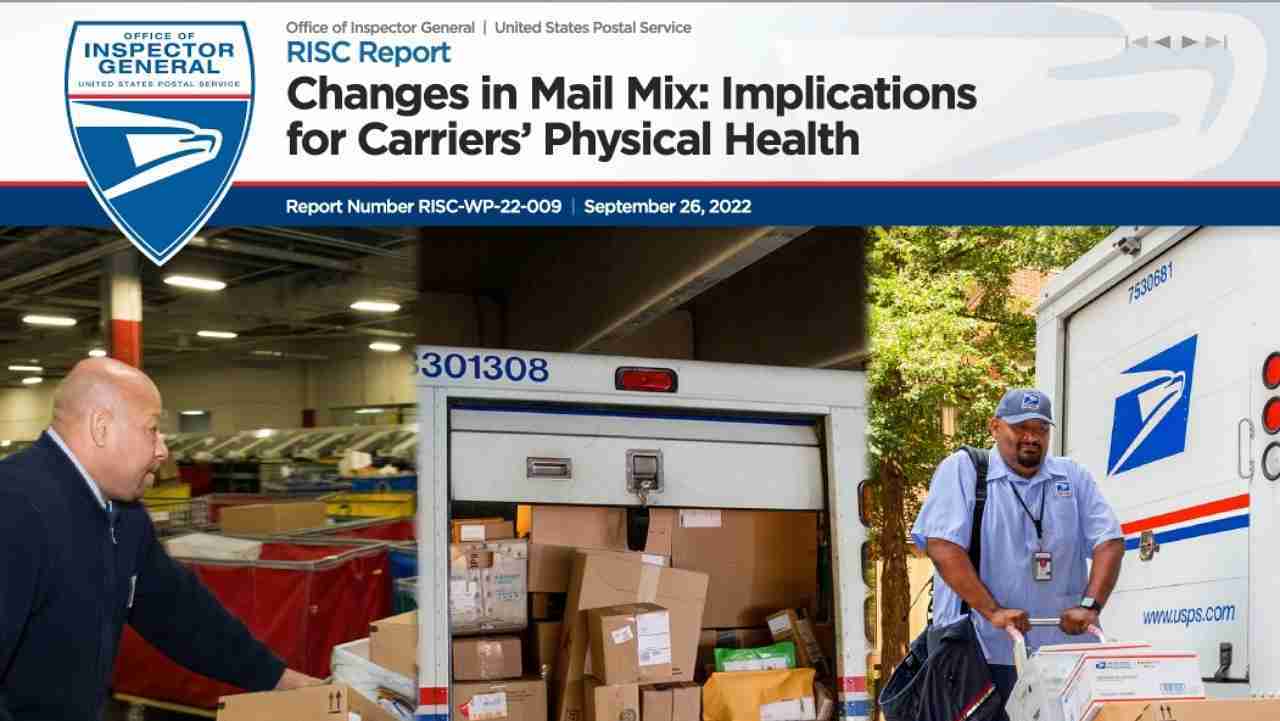- The U.S. Postal Service’s package volume and weight have increased as First-Class Mail has declined, representing a change in mail mix.
- The OIG found a correlation between total package weight and letter carrier injuries.
- The OIG found that the Postal Service has no specific protocols in place outlining how a carrier should deliver a heavy package.
- Although the Postal Service has numerous policies, trainings, and other resources to promote safety, opportunities exist to strengthen procedures for heavy packages.
As Americans continue to embrace ecommerce, the Postal Service’s package volume and weight continue to increase. Simultaneously, First-Class Mail volume is declining. These two trends are changing the composition of the classes and products — known as the mail mix — processed through the Postal Service’s delivery network.
The OIG found a correlation between total package weight and letter carrier injuries between January 2020 and December 2021. We identified certain carrier sub-groups that experienced more injuries than others, including pre-career carriers who delivered a ton or more of packages, newer carriers with less than one year of tenure, and carriers who work in medium-density population ZIP Codes.
Between October 2019 and December 2021, carrier workers’ compensation claims for new lifting-related injuries cost the Postal Service more than $79 million. Carriers represented 52 percent of all Postal Service employees during the scope period but 69 percent of the agency’s worker’s compensation claims. Reducing carrier injuries would lower the annual cost of injury claims and, thus, decrease the future liability for the Postal Service.
The OIG found that the Postal Service has no specific protocols in place outlining how a carrier should deliver a heavy package. The OIG recommended the agency develop and implement standard operating procedures outlining how a carrier should safely handle and deliver packages that weigh 35 pounds or more.

